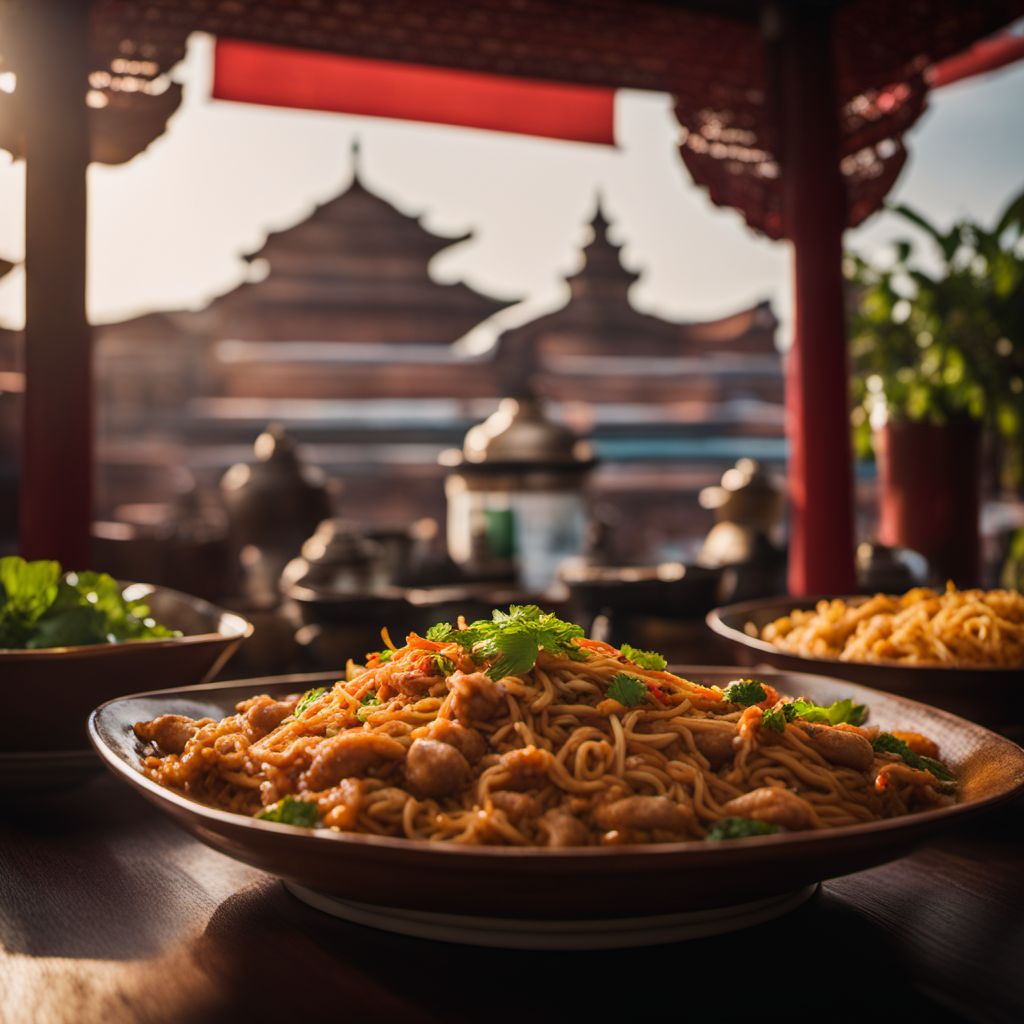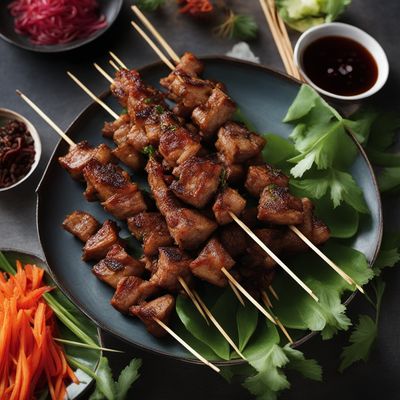
Cuisine
Burmese Chinese cuisine
Burmese Chinese cuisine is a unique blend of Chinese and Burmese flavors, with dishes that are both familiar and exotic. The cuisine is characterized by its use of fresh, local ingredients, such as seafood, chicken, pork, and vegetables, as well as traditional Chinese spices and seasonings. The result is a cuisine that is both flavorful and healthy, with a focus on balance and harmony.
Typical ingredients
Seafood, Chicken, Pork, Vegetables, Rice, Noodles, Soy sauce, Oyster sauce, Hoisin sauce, Ginger, Garlic, Chili, Five spice powder, Szechuan peppercorns, Sesame oil
Presentation and garnishing
Dishes are typically served family-style, with a focus on sharing and communal eating. Garnishes may include sliced scallions, cilantro, and chili peppers. Some dishes may also be served with a side of steamed rice or noodles.
The most popular dishes in Burmese Chinese cuisine include fried rice, chow mein, sweet and sour chicken, and stir-fried vegetables. Many of these dishes have become staples of Chinese cuisine around the world.
More cuisines from this region...
Singaporean Chinese cuisine, Malaysian Chinese cuisine, American Chinese cuisine, Japanese Chinese cuisine, Australian Chinese cuisine, Canadian Chinese cuisine, Peranakan cuisine, Korean Chinese cuisine, Chinese Indonesian cuisine, Filipino Chinese cuisine
History
The history of Burmese Chinese cuisine dates back to the 19th century, when Chinese immigrants first arrived in Burma. These immigrants brought with them their culinary traditions, which they adapted to suit the local ingredients and tastes. Over time, Burmese Chinese cuisine has evolved into a distinct style of cuisine, with its own unique flavors and cooking techniques.
Cultural significance
Burmese Chinese cuisine is an important part of Burmese culture, with many Chinese restaurants and takeaways found throughout the country. It is also popular in other parts of the world, particularly in Southeast Asia. The cuisine has been influenced by both Chinese and Burmese cultures, and has evolved over time to reflect the changing tastes and preferences of Burmese people.
Health benefits and considerations
Burmese Chinese cuisine is generally considered to be healthy, with a focus on fresh, whole ingredients and balanced flavors. However, some dishes may be high in sodium or fat, so it is important to choose wisely. Vegetarian and gluten-free options are also available at many restaurants.
Burmese Chinese cuisine recipes Browse all »

Burmese Chinese Style Steamed Egg Custard
Silky Delight: Burmese Chinese Steamed Egg Custard

Burmese Chinese Style Creamy Coconut Balls
Silky Coconut Delights: Burmese Chinese Style Creamy Coconut Balls

Burmese Chinese Style Kitsune Udon
Golden Noodle Delight: Burmese Chinese Kitsune Udon

Burmese Chinese Spicy Fish Soup
Fiery Fusion: Burmese Chinese Spicy Fish Soup

Burmese Chinese Style Cornmeal Porridge
Golden Cornmeal Delight: A Fusion of Burmese and Chinese Flavors

Burmese Chinese Klenät
Crispy Golden Delights: Burmese Chinese Klenät

Burmese Chinese Morteruelo
Silky Spiced Pork Pâté: A Fusion of Burmese and Chinese Flavors

Burmese Chinese Spicy Beef Stew
Fiery Fusion: Burmese Chinese Spicy Beef Stew

Burmese Chinese Michetta
Crispy Burmese Chinese Michetta: A Fusion Delight

Burmese Chinese Spiced Beef Soup
Savory Fusion: Burmese Chinese Spiced Beef Soup

Burmese Chinese-style Spiced Meat Skewers
Savory Fusion: Burmese Chinese-style Spiced Meat Skewers

Burmese Chinese Fruit Salad
Tropical Fusion Delight: Burmese Chinese Fruit Salad